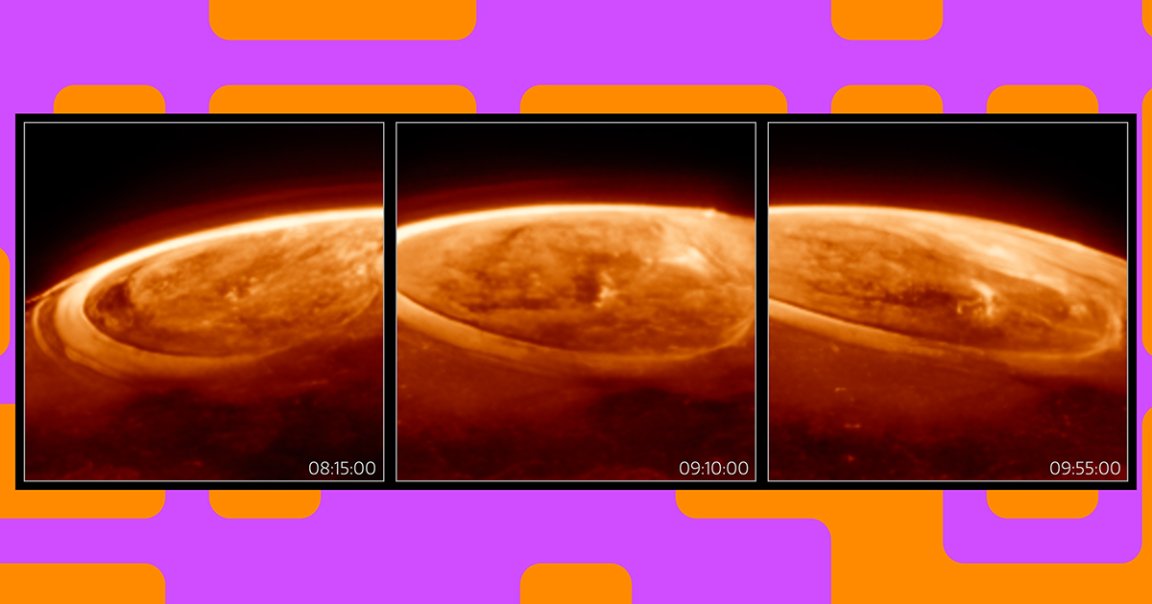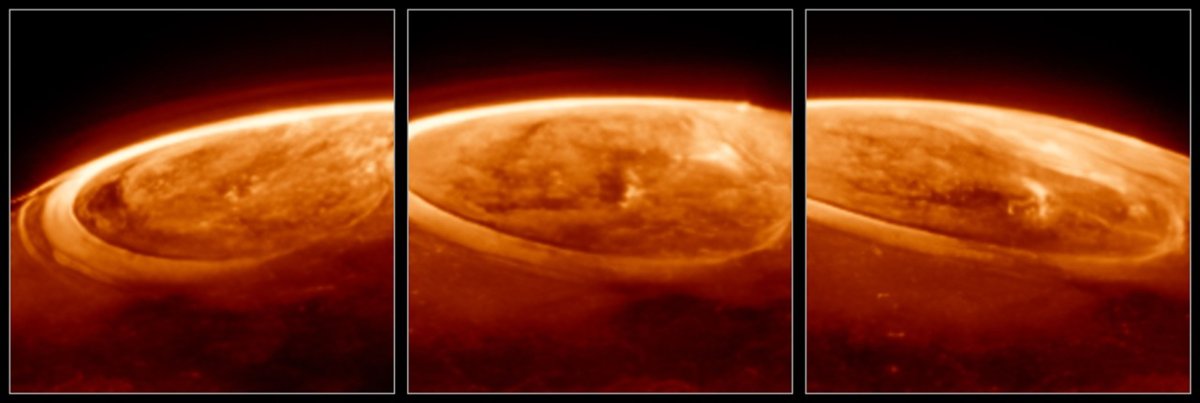
NASA has just released stunning new images of auroras on Jupiter — and they’re bigger and hundreds of times brighter than the northern lights on our puny world.
The spectacular snapshots were captured by NASA’s James Webb Space Telescope, using its powerful infrared instruments. And the findings, published in a new study in the journal Nature Communications, are already providing astronomers with surprising new details about the gas planet’s atmosphere.
“It just blew me away!” lead author Jonathan Nichols, an astronomer from the University of Leicester in the UK, said in a statement about the work. “We wanted to see how quickly the auroras change, expecting them to fade in and out ponderously, perhaps over a quarter of an hour or so. Instead, we observed the whole auroral region fizzing and popping with light, sometimes varying by the second.”
On Earth, auroras are created when high-energy, electrically charged particles from the Sun barrage the atmosphere near its magnetic poles. This “excites” or heats up the gas molecules that are present in the air, causing them to glow in the ethereal curtains of red, green, and purple that we know as the northern lights.
But the effect is even more intense on Jupiter, thanks to the influence of the gas giant’s absolutely ungodly magnetosphere. At approximately 15 times wider than the Sun — and about 20,000 times stronger than the Earth’s magnetic field — it’s considered the largest structure in the solar system.

With such awesome power, Jupiter’s magnetosphere effortlessly pulls in and traps charged particles from not just the Sun, but from its volcanic moon Io. Io’s frequent eruptions blast particles into space, where they’re accelerated to head-spinning speeds by its host planet’s magnetic field, before slamming into its atmosphere. There, they combine with the solar particles to create an enormous glow above the planet.
These energetic interactions produce electromagnetic emissions, which include the light we see. After imaging Jupiter’s auroras with the James Webb’s Near-Infrared Camera instrument, Nichols and his team discovered that the emission from the molecule trihydrogen cation — one of the most abundant ions in the universe — is far more variable than once believed, which could change our understanding of how the planet’s upper atmosphere heats and cools, according to NASA.
In addition, the team simultaneously imaged the auroras with NASA’s Hubble Space Telescope, revealing something even more puzzling.
“Bizarrely, the brightest light observed by Webb had no real counterpart in Hubble’s pictures,” Nicholas explained in the statement. “This has left us scratching our heads. In order to cause the combination of brightness seen by both Webb and Hubble, we need to have a combination of high quantities of very low-energy particles hitting the atmosphere, which was previously thought to be impossible. We still don’t understand how this happens.”
On the scent of something big, the team plans to study this discrepancy and gather follow-up observations with the James Webb and compare them with data from NASA’s Juno space probe.
More on Webb observations: James Webb Spots Disturbing Sight: Entire Planet Sinking Into Star